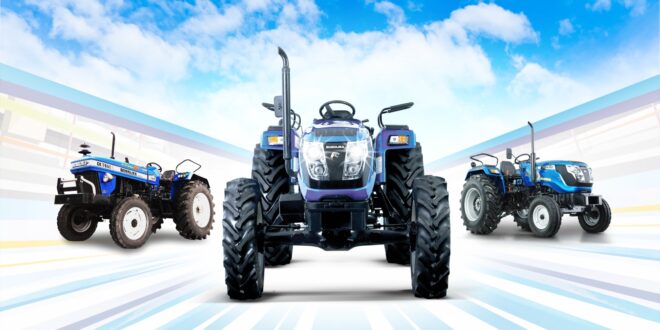Chennai, Aug. 2024
India’s No. 1 tractor export brand Sonalika is known for delivering unmatched joy and unparalleled satisfaction to farmers with its fuel-efficient heavy-duty tractors. Starting off its Q2 FY’25 leg, ‘Pride of India’ Sonalika Tractors has achieved a new benchmark performance to surpass 50K overall tractor sales in just 4 months of FY’25 and clocked an overall YTD sale of 51,268 tractors in Apr-July’24. Riding the robust growth trajectory, the company has outperformed the domestic market performance and continues to be among leading market share gainers in the domestic market. The performance has also set the brand’s momentum as the tractor industry prepares for the biggest season in the coming months.

The central government’s provision of Rs 1.52 lakh crore for the agri ecosystem and allied sector will not just increase industry’s contribution to the economy but also push the demand for advanced farm machinery. The farmer demands in India vary as per regional requirements and Sonalika truly believes that no one tractor fits for all, thus makes the biggest tractor range in 20-120 HP. This customised tractor range boasts of Heavy-Duty Mileage (HDM) and CRDS engines, multi speed transmissions and advanced 5G hydraulics that are designed to shape up the future of Indian agriculture.
Sharing his thoughts on the staggering performance, Mr Raman Mittal, Joint Managing Director, International Tractors Limited, said, “We are delighted to have surpassed 50K tractor sales mark in just 4 months to clock an overall YTD July’24 sales of 51,268 tractors. Our robust approach has enabled us to continue beating domestic industry performance and be among leading market share gainers. Sonalika’s in-house production capabilities at World’s No. 1 tractor plant includes making heavy duty engines, transmissions, sheet metal et al, allow us to customise tractors as per market & customer’s need thus able to penetrate newer markets faster.
Budget 2024 has brought in revised focus of the central government on the agri ecosystem output and the planned reformative actions should push demand for farm mechanisation moving forward.”
 Expressnews
Expressnews









